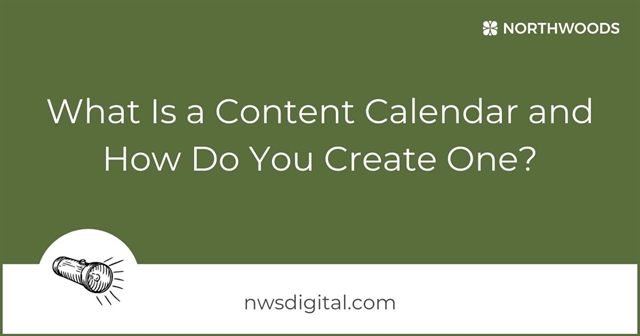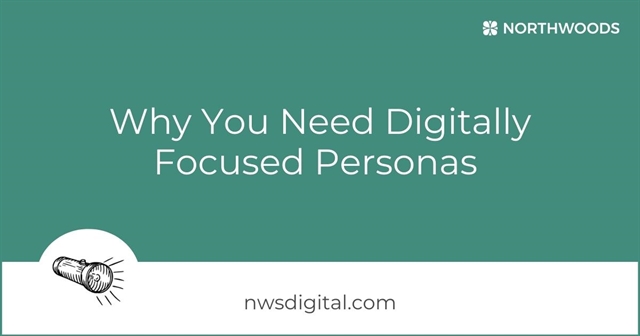By Northwoods Team
May 19, 2021
5 Minute Read
Content strategy comes down to understanding what content will extend real-world help to your target audience even as it encourages that audience to take actions that boost your business.
To succeed, you must set goals, research your audience, and foresee how users will interact with your content. How do you do that? Read on.
What Is a Content Strategy, Exactly?
Your business has goals. When you leverage online content to meet those goals, you are creating and executing a content strategy. For example, your business may want to improve customer retention to increase profits. To achieve this goal, you can create content that educates customers, explains product features, and answers common questions.
Content must reach and engage users to have value. That means your strategy should include SEO (Search Engine Optimization) to raise your website’s visibility and drive traffic to your products or services. Once your new and established audiences find your content, they must like it. High-quality content builds trust with new audiences and maintains customer loyalty. It also boosts SEO, because search engines favor good content over junk.
Tips for Creating a Content Strategy Framework
Before creating your content, focus on the following:
Know Your Goals & KPIs
Don’t only create content that amuses you then cross your fingers hoping someone reads it.
Each of your audiences seeks particular services or products. Before you start writing content, know who is seeking what. Tailor goals, content and tactics to each definable audience. Know just what actions you want them to take when they land on your website.
When you’ve done that, create content that meets user needs. That could be engaging storytelling, or it could be something less than brilliantly creative. Sometimes, it’s just a matter of, say, getting good, detailed pictures into a parts catalog.
Key Performance Indicators (KPIs) measure strategic objectives. Your KPIs will keep your business objectives at the forefront of decision-making.
Some KPIs for content marketing:
- Unique page visits
- Downloads
- Time on page
- Cost per click (CPC)
- Comments and interactions
- Inbound links
These common KPIs might not be the ones that apply most to your business. Choose KPIs that align directly with your goals.
Know Your Audience and Its Needs
Who will read your content? What websites and social media channels do they visit frequently? What problems do they most often encounter? What are their habits? Demographics? Preferences? Interests?
Answer these questions before creating content. Know your audiences. Speak specifically to each of them.
Your products or services solve problems your audiences face. Therefore, your content should educate your audience about those problems. Let them know that you understand their pain points, and that you’ve thought them through and devised the cure.
Tip: Conduct keyword research to help determine how your audience searches for a given topic. This can suggest topics to place on your content calendar.
Know Your Content Format
Once you’ve set goals and identified your audience, determine the best format for each piece of content. Format types include:
- Infographics
- Videos
- Blog Posts
- Case studies
- E-books
- Downloads
The format depends in large on the audience you want to reach. What type does your audience consume most frequently? Your goals for a particular piece of content also influence format. For example, if you’re trying to harvest email addresses for prospective customers, consider a downloadable e-book. If want to raise overall brand awareness, a blog post might be a better fit.
Manage Your Content Creation
You’ve set your goals, chosen KPIs, defined your audience, and settled on content formats.
Now, how will you manage your publications? This daunting task is an important part of your marketing strategy.
You must determine in advance: your content topics; who will create what pieces of content; and where and when the content will appear. This info should be available to all stakeholders via a content calendar, so everyone knows what’s coming and who’s responsible.
Choose a tool to help plan and manage your editorial calendar, for example:
- Google Sheets
- Trello
- Google Calendar
- Slack
- Plugin for WordPress
- Loomly
- Microsoft Excel
Many more, free and paid, are available. Find one that works for your team.
How Will Your Audience Find Your Content?
If you built it, they will not necessarily come. Develop a promotion plan as part of your content strategy. Will you:
- Email content to customers?
- Promote your content on social media?
- Advertise to drive new users to your content?
- Or rely mainly on SEO?
These questions should be easy to answer once you know your target audiences and your content strategy goals. Note that each amplification tactic needs its own set of strategies and goals.
How Will You Measure Success?
Measurement of your content strategy takes you back to your established KPIs, which you developed to measure and report on success.
Once your KPIs are set, you can start to think about how to create a data visualization plan to clearly show progress toward your content strategy goals.
Why Companies Need to Create a Content Marketing Strategy
Through content marketing, you can answer users’ questions, educate them, and build trust with your audience. By connecting with your audience, you’ll improve conversions and generate leads.
Content marketing is at the heart of all successful digital marketing campaigns. It drives results by:
- Improving SEO
- Showcasing your expertise
- Building relationships with customers
- Raising brand awareness
- Increasing conversions
- Distinguishing your company from competitors
- Supporting overall digital marketing strategy
Content marketing is the foundation of all your marketing efforts and produces long-term, sustainable results. Search engines reward companies that publish high-quality and unique content. Embrace content marketing to achieve your goals.
If you’re looking to improve your content strategy or need help creating one, we can help! Don’t hesitate to contact us. Also, don’t forget to subscribe to our blog emails to keep up with the latest digital marketing trends.
Related Blog Posts

A content calendar organizes production and flow of content and provides an at-a-glance overview of how that content advances both short-term and long-term business goals. Here are the elements of a successful content calendar and tips for creating and managing it.

Do conversations with your SEO expert about your site's performance leave you with more questions than answers? You're not alone. Check out our SEO field guide to help you navigate through Google's ranking factors.

Understanding your target audience is more important in marketing today than ever before. But audience data and personas are only useful if they're developed with your digital tactics in mind. Here's why the best personas are developed using data.